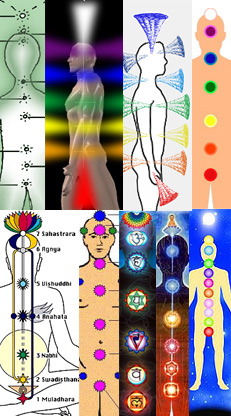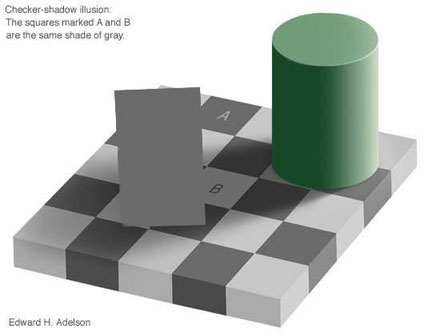Between every holistic system, there are always similiarities and differences. Often, the differences are regarded as the elements which separate one system from another. This can also lead to the belief that the system that one is familiar with is right, whereas other systems are wrong, because of these differences. We say, “This can’t be true, because that other thing is true.” What we don’t say is, “This is true because I understand it, and that other thing can’t be true because I don’t understand it (or I haven’t experienced it yet).”
Well, what is Truth anyway?
A common response is, “Well, all truth is relative.” This is correct, but it shouldn’t be an excuse for not actually searching out the Truth, or discovering how two different systems can both be sharing the Truth.
Here are a few principles I’ve found that help with this process of “converting one Truth to another,” or in other words, translating.
1. There is a difference between Vibration and Expression.
This means that when something vibrates, there is a frequency and form to that vibration, but the frequency and form are not always present in the way we express that vibration. The color red has a frequency, which tell us how fast it vibrates, or more accurately, how often each of its waves pass by any given point in space relative to the speed of light passing through that point. However, we don’t draw red or describe red with squiggly waves of vibration, we pick out the red crayon with the wax that is reflecting the red light frequency and draw with it. We say that the color of the wax on the page is red, but that’s really just the expression we call red. The real “red” is in the vibrational frequency.
What we often find in looking at different Chakra or Numerology systems from different cultures is that they often don’t agree on either the number or color that represents each Chakra, or the Numerology of a sacred geometry form will be described exactly the same, but have one more or one less in the number of vertices.
With color, this is usually an issue of expression versus vibration. One culture decided to express a certain element or energy with one color, whereas another culture decided to express that same element or energy with a different color.
I have found it extremely useful to look at every way I can possibly find that a certain element or energy has been expressed by different cultures, then work to understand the reason why each expressed it the way they did by looking at the similarities, differences, and histories of each of the cultural groups. This is the sociology of Metaphysics.
In the models below, what I have displayed are the vibrational forms of each Chakra, and colored each of the primary points by a systematic study of the vibration of each component element and energy, as well as its most common universal expressions.
2. There is always a Transcendant of any number or geometric form.
If you are in the experience of the Duality (2), perceiving things from the point of view of Positive or Negative, you can only see the other option, and so you are forced to choose between one way or the other, black or white. However, if you realize that you are choosing, and are able to step back and perceive your own point of view for a moment, you will suddenly be seeing both Positive and Negative from a neutral state of Balance. In this way, you can Transcend duality through being able to perceive duality as an external observer, and then you are experiencing the Trinity (3).
Each step in the evolution of the Ray of Creation is a Transcendance from the previous step. Do not make the mistake of judging this as better or worse! It simply is seeing where you have been from a new perspective, one that encompasses everything previous to it. If you woke up suddenly in a strange room you’ve never seen before, how do you know where that room is? The only way to know is to step outside the room itself, and possibly outside the building, to understand the place where you have been. This is similar to Plato’s cave analogy.
3. The Transcendant is an intrinstic part of Experience, and so is part of any Vibrational form.
As an example, you will find below that I’ve described the Root Chakra in depth, and I’m illustrating it as a 5-Pointed system with 5 Elements, where you may have heard that the Root Chakra is supposed to have 4 Lotus petals. This is because the Hindu numerology of the Root Chakra is based on its expression, namely the four Earth elements, four corners, four directions, and so on.
The description below recognizes these four expressions, and also takes into account the Transcendant as a part of the vibrational exchange between the four elements. This means that the Spirit point is part of the exchange between all the other elements, and must be present for the Experience of that layer of existence.
In some of the geometries below, there are multiple Transcendants, especially in the Trinity forms of the Higher 3 Chakras (the 15, 18, and 21). These multiple Transcendants are part of the Vibrational form, and yet there is always another Higher Transcendant which includes all the points and existing Transcendants together. This is how the unfolding continues!
As an example, with the Throat Chakra (Communicability, 15), you have three Spirit points (or Transcendants), which are each of the Spirit points from the three 5 Pointed Pentagrams that make up the 15 Pointed Star (Pentakaidecagram). This is the Vibrational Form of the Throat Chakra. The 16th Point is the next Transcendant, and now there is only One Transcendant in the vibrational form. The addition of the 17th Point adds another Transcendant to the previous, so now there is two. Finally, at the 18th Point, the Third Transcendant (or Trinity) is present again, and the Third-Eye Chakra Vibrational center can be established. The Third-Eye Chakra (Spirituality, 18) is a collective experiencial field, which is why the Trinity is necessary for its completion.

that have unique color systems.
But what connects them?

in our minds as a certain hue. Some cultures
express the Element of Earth as brown,
where other cultures expressed it as green.

exactly the same shade of grey.
If you look at the right edge of the
grey card that overlaps each, you will
see that this is True. Your perception
does not naturally see it, so you
must step into another perspective.
